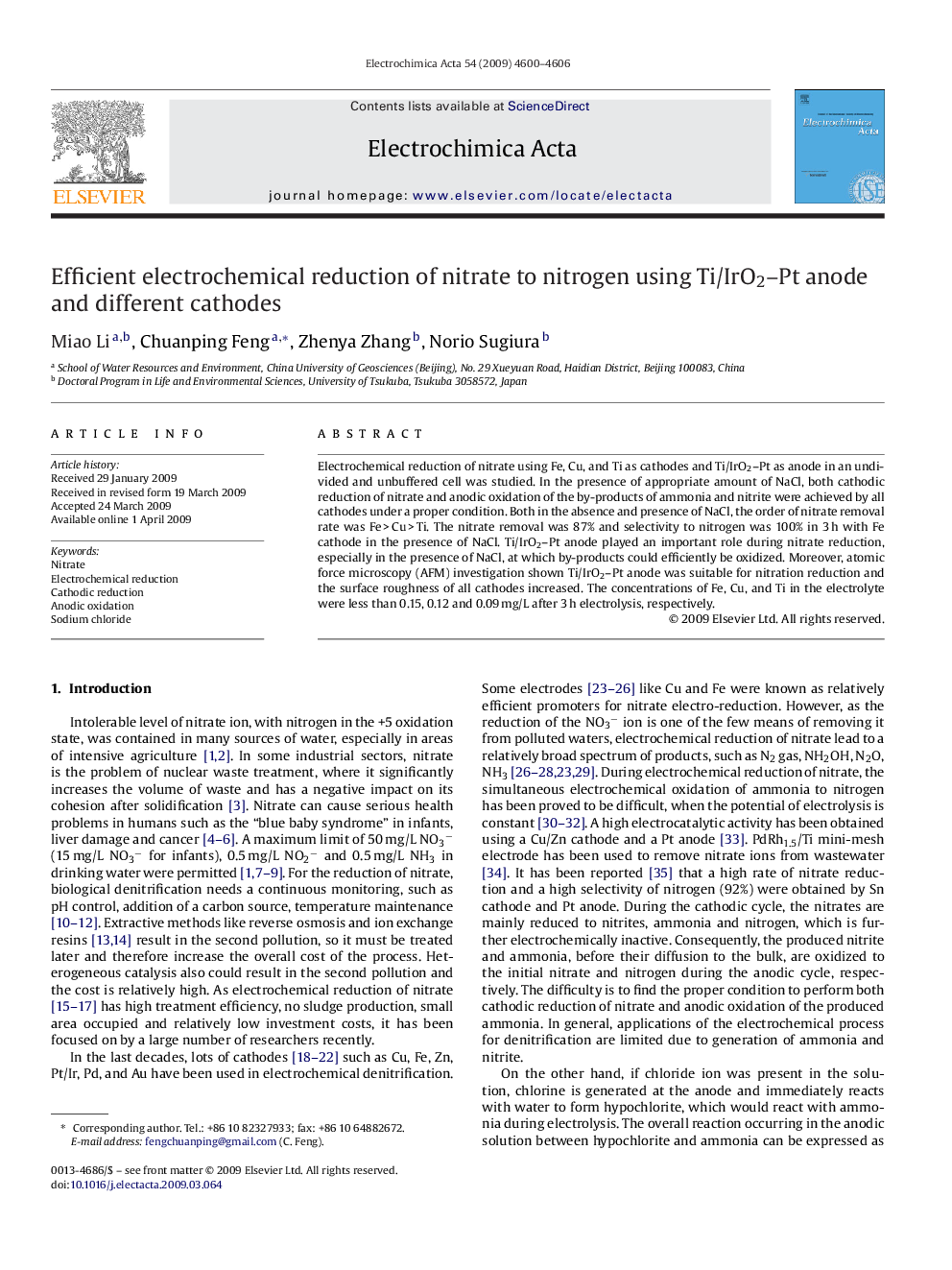| Article ID | Journal | Published Year | Pages | File Type |
|---|---|---|---|---|
| 191973 | Electrochimica Acta | 2009 | 7 Pages |
Electrochemical reduction of nitrate using Fe, Cu, and Ti as cathodes and Ti/IrO2–Pt as anode in an undivided and unbuffered cell was studied. In the presence of appropriate amount of NaCl, both cathodic reduction of nitrate and anodic oxidation of the by-products of ammonia and nitrite were achieved by all cathodes under a proper condition. Both in the absence and presence of NaCl, the order of nitrate removal rate was Fe > Cu > Ti. The nitrate removal was 87% and selectivity to nitrogen was 100% in 3 h with Fe cathode in the presence of NaCl. Ti/IrO2–Pt anode played an important role during nitrate reduction, especially in the presence of NaCl, at which by-products could efficiently be oxidized. Moreover, atomic force microscopy (AFM) investigation shown Ti/IrO2–Pt anode was suitable for nitration reduction and the surface roughness of all cathodes increased. The concentrations of Fe, Cu, and Ti in the electrolyte were less than 0.15, 0.12 and 0.09 mg/L after 3 h electrolysis, respectively.
